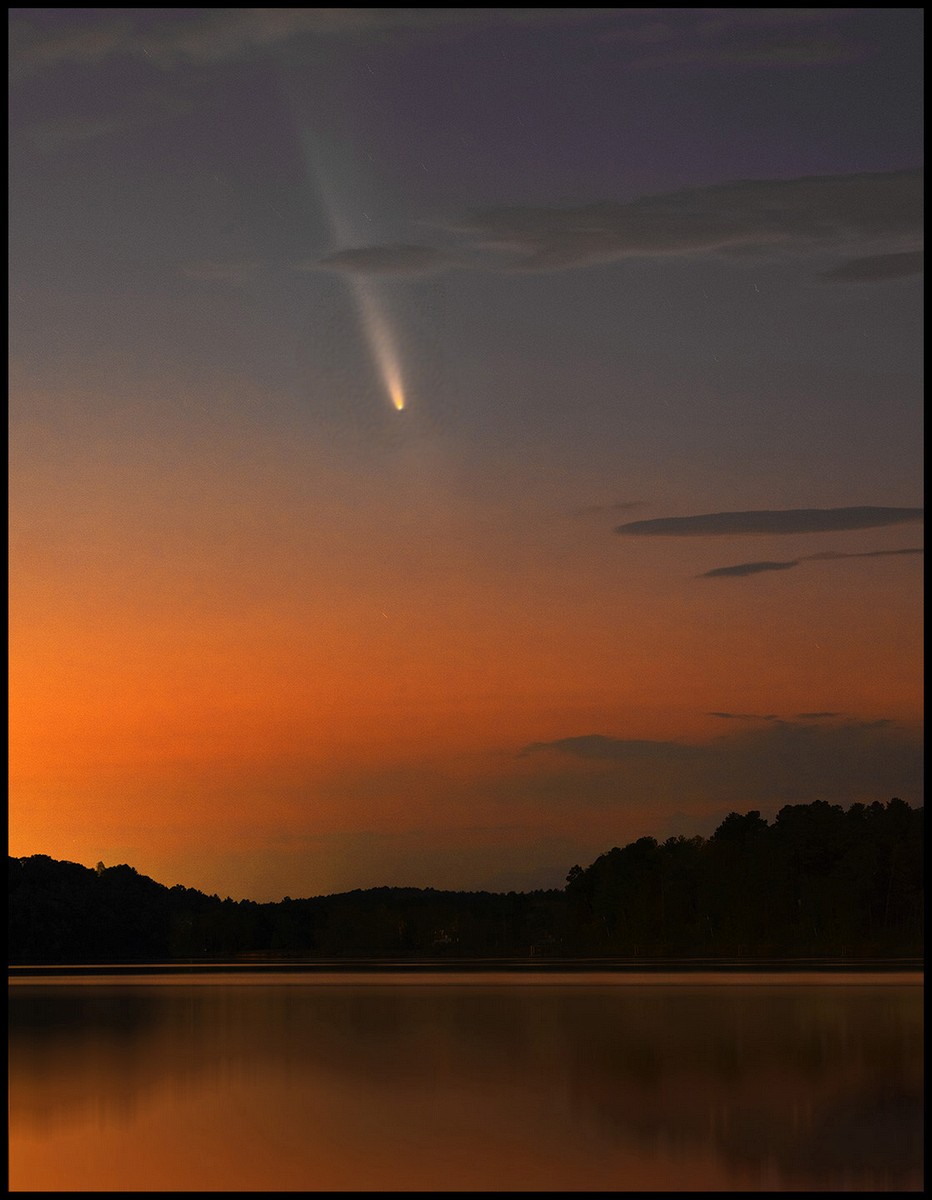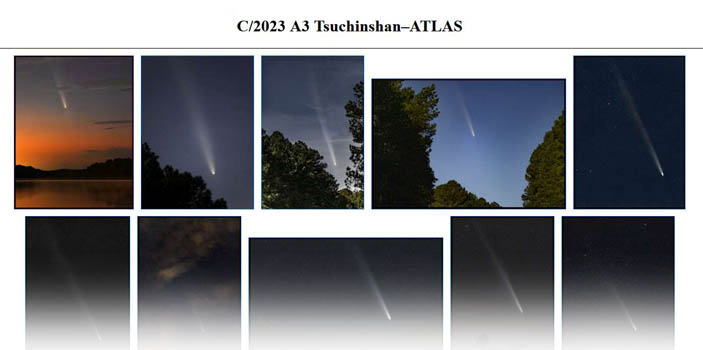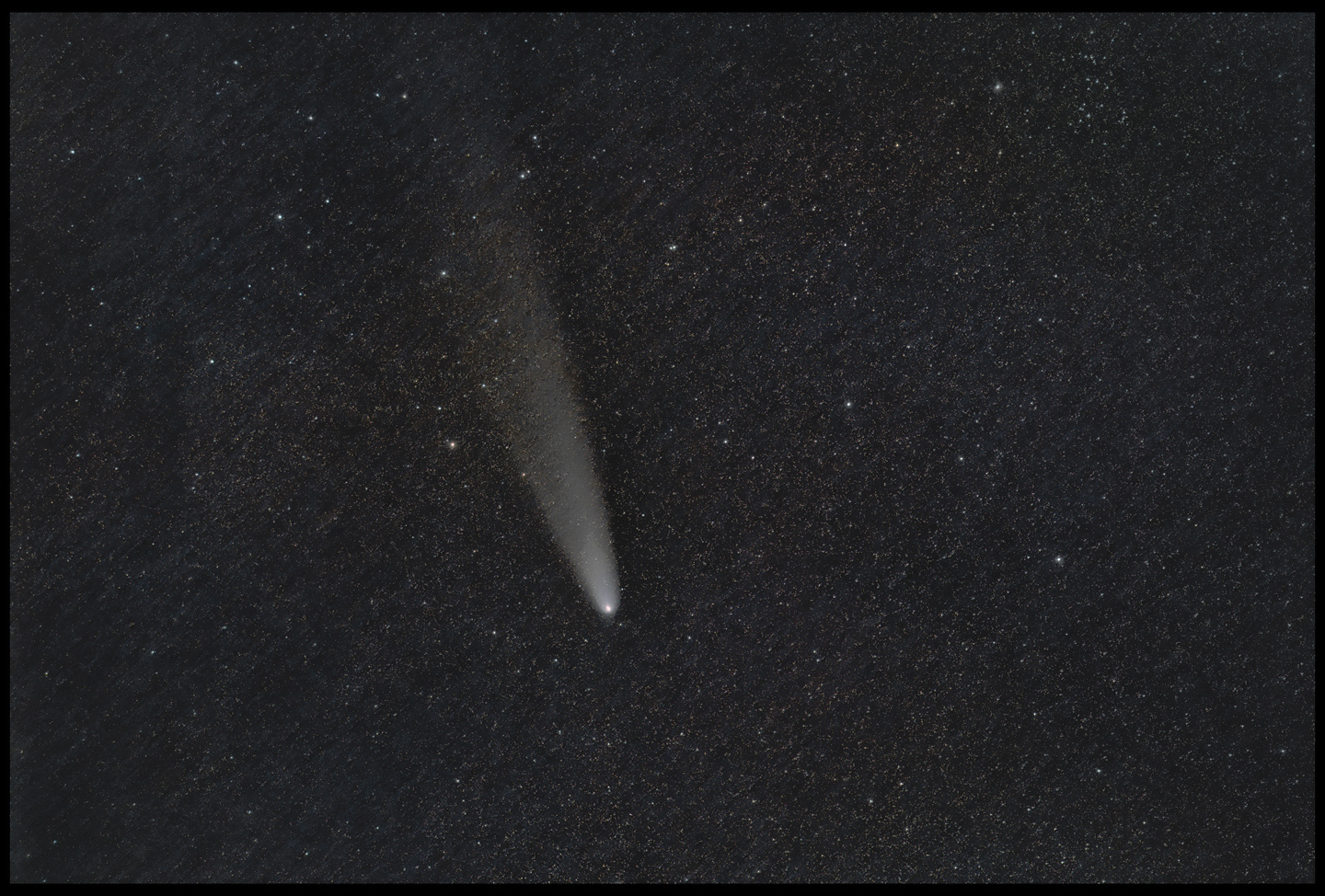The Starry Night, 264 :: home :: |
A Comet Worth the Wait.
Several clear nights followed, and I used as many as I possibly could (in part because I can't kvetch about cloudy skies if I don't use clear ones when I have them). This album of comet portraits needs more explanation than it currently has -- dates, lenses, exposures, the works. For now, click the teaser image below for a collection of photos as A3 recedes from the inner solar system:
All these photos were made with a 105mm Sigma or a 400mm Nikkor lens, always at full aperture, F1.4 or F2.8 respectively (I paid for all that glass and I mean to use it). Sunset's glow, twilight, moonlight, suburban and rural skies, and satellites accent the images. Some were made using a fixed tripod, others on one of two equatorial mounts. In any case, several individual exposures (from 4 to 33) were aligned and stacked in Photoshop or in a utility called "Sequator" or in Pixinsight to reduce noise of all kinds and permit more aggressive processing. The individual exposures ranged from 1/2-second to 10 seconds at ISO 3200, 6400, or 12,800 with a Canon R6. I'll add some techtalk and other notes to the individual images, but little of that is out there yet. I'm still selecting the best of the take, and I might make more as the comet fades in the distance.
2024/10/30. Late addition to the page: I keep seeing these highly detailed images made with, typically, something like 10-inch reflectors. And I thought, look, I'm using a damn-near 6-inch refractor, and I'm not seeing that stuff. What's wrong? So I got serious with my longest integrations and yeah, there's stuff to see like the cyanogen hood around the comet's head and that narrow ribbon in the tail, and a few other shadings. So, I can relax now, OK?
It's a crop (because I didn't have a flat to control the central hotspot when stretching this aggressively) from a 400mm frame made on October 24. I stacked nineteen 10-second frames in Pixinsight, removed the stars (Starnet2), stretched, messed with a Pixinsight process ("Local Histogram Equalization" under Intensity transformations), sharpened, put the stars back after BlurX'ing them to polish their PSFs, overlaid the original data to get color information, then re-saturated the stars and the comet and called it done. For scale, the two tick marks on the lower border are 1/2 degree apart. Resolution at full scale is on the order of 4 arc seconds, and the limiting magnitude is somewhere around 16.
2024/11/07. "Nothing in heaven functions as it ought," (see below), except the heavens themselves. Our autumn comet is hanging in there. It's at least two hundred times fainter than at its best in mid-October, and is now 120 million miles from Earth and 100 million miles from the Sun. I really wasn't sure I was going to find it in the growing moonlight, but after a slow cartesian search among the stars of Ophiuchus and Serpens, there it was, way less impressive than this. Make it big to see what's in there. The comet's tail in the photo is about 1.5 degrees long, less than a tenth its length in most of the photos above.
Not bad for a short exposure on a moonlit, not-particularly-transparent evening. Over on the left side of the frame are dark clouds listed in Guide as Lynd's Dark Nebulae 601(9) and 592(991). Open cluster NGC 6633 is at upper right. I used an embroidery hoop with a piece of white post office bag for a flatfield diffuser (ten frames without moving the camera), and yes, you can flat the CR3 files without first converting to XISF or debayering them (my flatting technique leaves a lot of work to do with gradient and vignette removal, but it's a good start; "walking noise" is an issue whether or not I apply darks; that needs solving). And now, with recent events in mind... https://www.poemtree.com/poems/NothingInHeavenFunctions.htm
:: top :: |
© 2024, David Cortner



